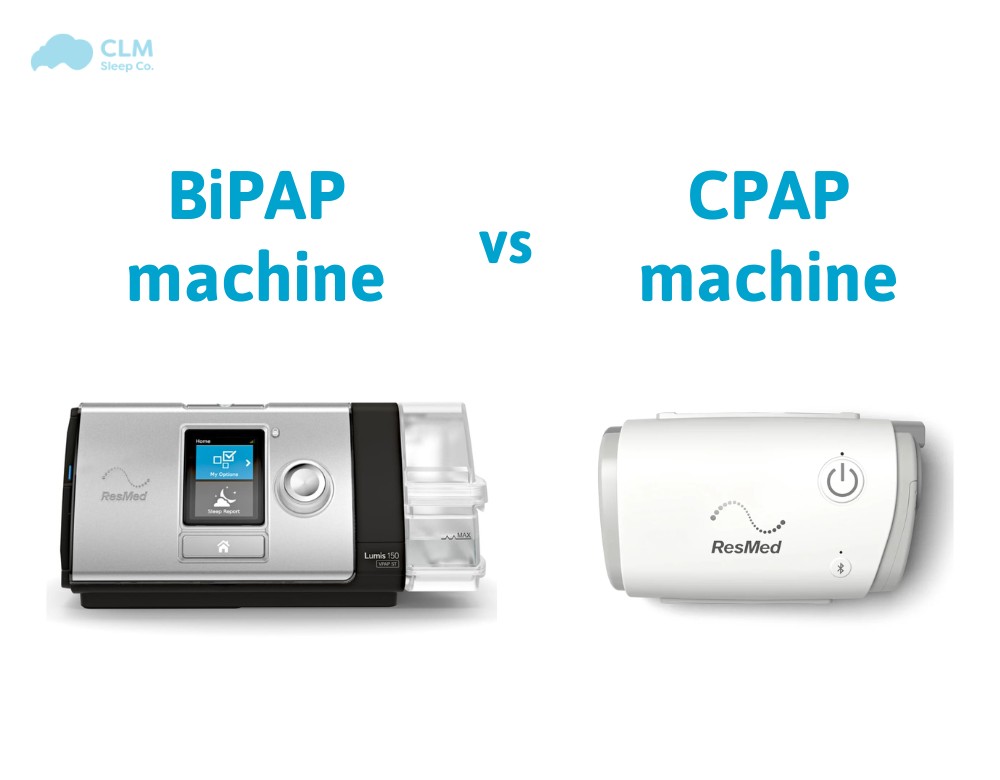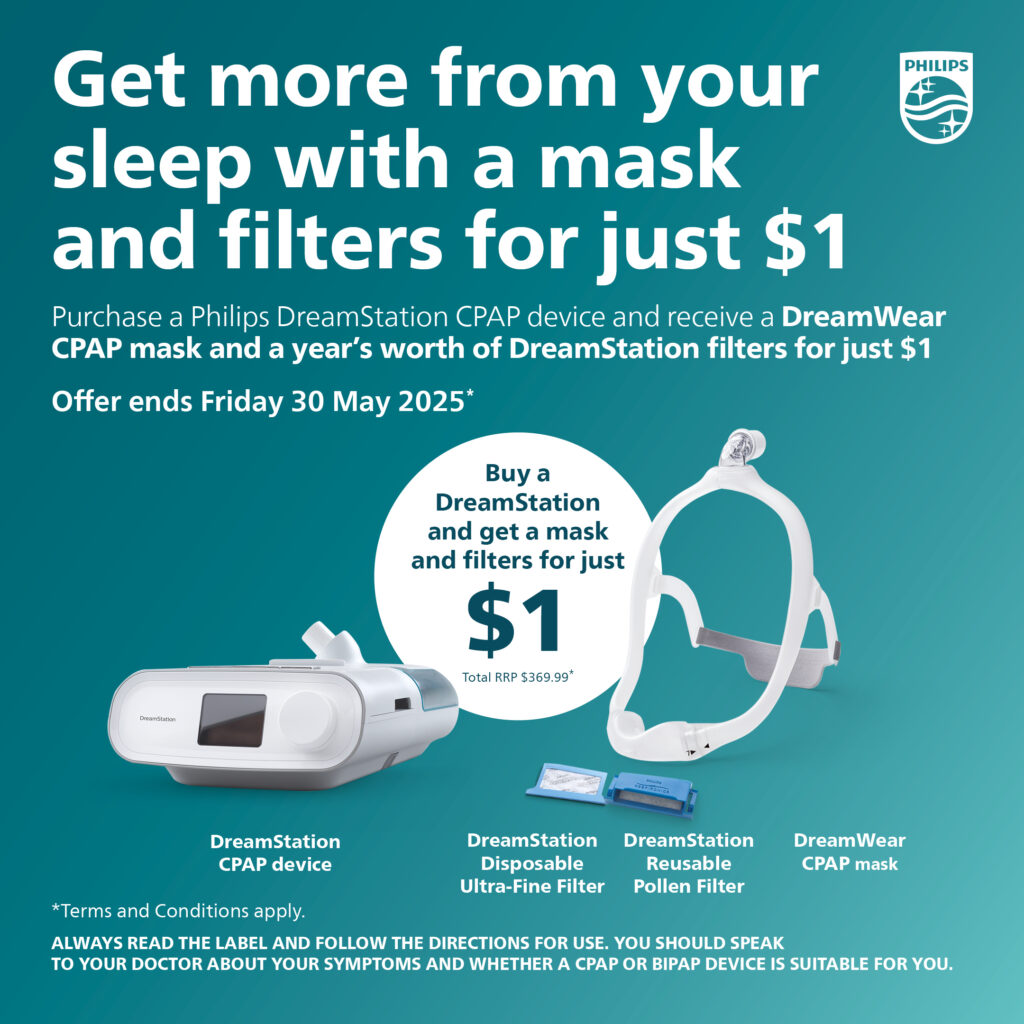Both BiPAP (Bilevel Positive Airway Pressure) and CPAP (Continuous Positive Airway Pressure) are non-invasive ventilation modalities commonly used to treat sleep apnea and other respiratory conditions. While they share the common goal of maintaining an open airway, there are significant differences in their mechanisms and clinical applications. In this article, CLM Sleep will delve into the distinctions between BiPAP vs CPAP.
Understanding BiPAP vs CPAP
What Is CPAP?
CPAP therapy delivers a constant, steady stream of pressurized air through a mask, preventing the airway from collapsing during sleep. It is primarily used for obstructive sleep apnea, where the upper airway becomes blocked repeatedly.
CPAP machines are a medical device used to deliver continuous positive airway pressure therapy. This machine generates a continuous, gentle stream of air that is delivered to the airways through a mask
What Is BiPAP?
BiPAP offers a more customized approach by providing two levels of pressure, with a higher inhalation pressure to open the airways and a lower exhalation pressure to facilitate easier exhalation. This versatility makes it suitable for a wider range of patients, including those with obstructive sleep apnea and central sleep apnea, as well as those with chronic obstructive pulmonary disease (COPD) and heart failure.
A BiPAP machine is a medical device used to deliver BiPAP therapy. By providing two different levels of air pressure, this type of machine can help treat more complex conditions than CPAP machines.
Key Difference between cpap and bipap
The main difference lies in the pressure level. BiPAP provides two flexible levels, while CPAP provides a single, constant level.
| Feature | CPAP | BiPAP |
| Pressure levels | Single, constant pressure | Two levels: inspiratory and expiratory |
| Patient population | Primarily obstructive sleep apnea | Obstructive and central sleep apnea, COPD, heart failure |
| Benefits | Improves oxygenation, reduces daytime sleepiness | Offers additional benefits for patients with more complex respiratory conditions |
| Patient comfort | May be less comfortable for patients who find it difficult to exhale against a constant pressure | Often more comfortable for patients who experience shortness of breath or difficulty exhaling |
| Limitations | May not be as effective for patients with central sleep apnea or severe COPD | Requires more complex titration and monitoring |
What is the difference between CPAP machine and BiPAP machines
CPAP vs BiPAP Machines are both non-invasive ventilation techniques used to treat sleep apnea and other respiratory conditions. Although BiPAP vs CPAP both aim to keep the airway open, there are differences in their mechanisms and applications.
- Pressure: CPAP has only one pressure level, deliver a steady flow of air at a constant pressure throughout the time. On the other hand, Bipap is more flexible, using two pressure levels, a higher inspiratory pressure and a lower expiratory pressure.
- Mechanism of action: CPAP mainly works to Opening the airway, Preventing blockages and Improving oxygen levels. In addition to the same mechanisms as CPAP, BIPAP also Stimulates respiratory reflexes, supports breathing and reduces breathing pressure
- Display and Controls: CPAP machines have a simpler display, showing basic parameters such as pressure, usage time, and alarms. Bipap machines, on the other hand, typically have more complex displays that allow the user to adjust a variety of settings including inspiratory pressure, expiratory pressure, I:E ratio (inspiratory time to expiratory time), and more advanced features.
- Size and Weight: CPAPs are generally smaller and lighter, making it more portable for travel. Meanwhile, bipap machines are designed for home use, not for portability like CPAP machines.
- Humidity and Heating: Most CPAP machines have a built-in humidifier to add moisture to the air, preventing dryness and irritation. While some BiPAP machines offer more advanced features like heated tubing to deliver warm and humidified air, enhancing patient comfort.
- Price: BIPAP machines will cost more than CPAP machines because of their complex structure and support for treating more diseases.
Summary
Summary of differences between cpap machines and bipap machine
| Feature | CPAP machines | BiPAP machines |
| Pressure levels | Single | Two levels |
| Functionality | Primarily for OSA | OSA, CSA, COPD, heart failure |
| Display | Simple | Complex |
| Operating modes | Single | Multiple |
| Size | Smaller | Larger |
| Humidity | Humidifier | Humidifier or heated tubing |
Clinical Applications
As mentioned, CPAP is the gold standard treatment for obstructive sleep apnea. It is highly effective in reducing apneas and hypopneas, leading to significant improvements in quality of life.
BiPAP is used in a variety of clinical scenarios:
- Central sleep apnea: The two-level pressure system can help to stimulate breathing and prevent central apneas.
- COPD: BiPAP can improve dyspnea, reduce hospitalizations, and enhance quality of life in patients with COPD.
- Heart failure: BiPAP can alleviate dyspnea and improve oxygenation in patients with acute or chronic heart failure.

Choosing the Right Therapy
The decision to use CPAP or BiPAP depends on several factors, including:
- Type of sleep apnea: Obstructive, central, or mixed
- Severity of symptoms: Frequency and duration of apneas, daytime sleepiness
- Presence of other respiratory conditions: COPD, heart failure
- Patient tolerance: Comfort with the mask and therapy
A thorough evaluation by a respiratory physician, including a sleep study, is essential to determine the most appropriate therapy for each individual patient.
Conclusion
Both CPAP and BiPAP are valuable tools in the management of sleep apnea and other respiratory disorders. While CPAP is a simpler and more widely used therapy, BiPAP offers greater flexibility and can be beneficial for patients with more complex conditions. The choice of therapy should be individualized based on the patient’s specific needs and clinical presentation. As a respiratory physician in Australia, I emphasize the importance of a personalized approach to ensure optimal outcomes for all patients.





